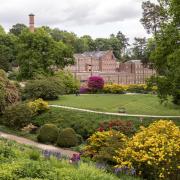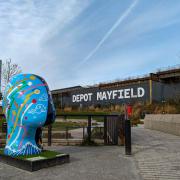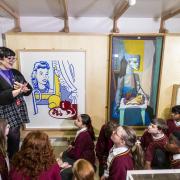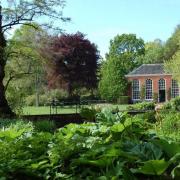Our antiques writer asked museum curators to pick out the things from their collections that they would like to take home during lockdown

What a dish
Andrew Schofield selected this beautiful 17th century earthenware Staffordshire dish from the Stuart Room in the Period House at the Grosvenor Museum in Chester, because it bears the names of its owners. Its elaborate decoration was done by the careful application of liquid clay, called slip.
“It would be wonderful to discover more about who they were and how they came about to have this highly detailed dish made for them,” says Andrew. “Although we don’t know much about the maker Thomas Toft himself, he is one of the best known and skilful decorators of slipware pottery.
“It is a very important part of our collection as it is one of only two dishes that show a date and thus provides information on when Toft was working.”
Dated 1671, the dish is decorated with the royal coat of arms and the initials CR for Charles II, while inscribed on the rim are the names of the people for whom it was made: FILEP HEVES ELESABATH HEVES.
“The names probably stand for Philip and Elizabeth Hughes and 1671 was perhaps the year they were married. “We do not know any more about Philip or Elizabeth, but the dish may have been for display in their home to demonstrate their loyalty to the King – 1671 was only 11 years after the restoration of the monarchy and the Civil War and Commonwealth were in living memory.”

Worth its salt
I asked curators to ignore the practicalities of size or weight and Richard Hall, of The Lion Salt Works Museum in Marston, near Northwich, took it literally – he would have removed the Works’ iconic ‘nodding donkey’ to his back garden. “Its restoration has not only brought back to life a much-loved local landmark but has also preserved an important piece of our region’s industrial heritage. To see it at work again has been one of the highlights of my career,” Richard says.
The ‘donkey’ – more correctly called the brine extraction train – dates from the 1930s and was used to pump around 2,000 gallons of brine an hour at 15 strokes a minute. One ton of salt required 900 gallons of brine, boiled for several days in large open pans.
The pump was abandoned and became derelict after the works closed in 1986. It reopened as a museum in 2015, telling the story of Cheshire’s important salt industry, which brought work and prosperity to the region.
“When it was switched on last year, the sight of the rocking beam moving gracefully up and down brought back fond memories of the Lion Salt Works in its heyday,” says Richard.
“Newly refurbished, freshly painted and sitting on a brick base on rebuilt foundations, the nodding donkey, complete with its restored header tank and supporting frame, is instantly recognisable to anyone approaching the salt works on foot, by car and indeed canal barge.”

Man of oak
Vic Charlesworth of Warrington Museum of Freemasonry chose this carved oak charity box made from wood from a Spanish warship sunk at the great Siege of Gibraltar, 1779-1783. The wood was recovered from the site in 1900 and John McNab made and presented the box to Liverpool Masonic Club where it was displayed on the bar. Rumour has it that if anyone entered still wearing their hat they would be fined and the coin put into the box. The lid is carved with the entreaty to ‘Be Generous’.
According to senior researcher Caroline Crook, McNab was born in 1839 in Rostellan, County Cork, and went to sea in 1855 as a ‘Boy’, becoming a Master Mariner in 1867. He married Margaret Kirkwood Riddell, the fourth daughter of a New York merchant, at St Mary’s Church, Birkenhead in 1868. Their first child was born in 1868, but lived only two years, while Margaret died shortly after the birth of her eighth child in 1884 at the age of 37.
McNab joined the Royal Naval Reserve in 1864 and rose to become commander in 1904 and later captain. He travelled all over the world, later becoming chief examiner and secretary of the Liverpool Local Marine Board in 1886 and finally head of the Mercantile Marine Department. He could read and write in seven languages and wrote three books on maritime law and seamanship. He became a Freemason in 1871 and progressed to become Worshipful Master of Merchant’s Lodge No 241 in 1888 and subsequently a Past Provincial Junior Grand Warden.



























